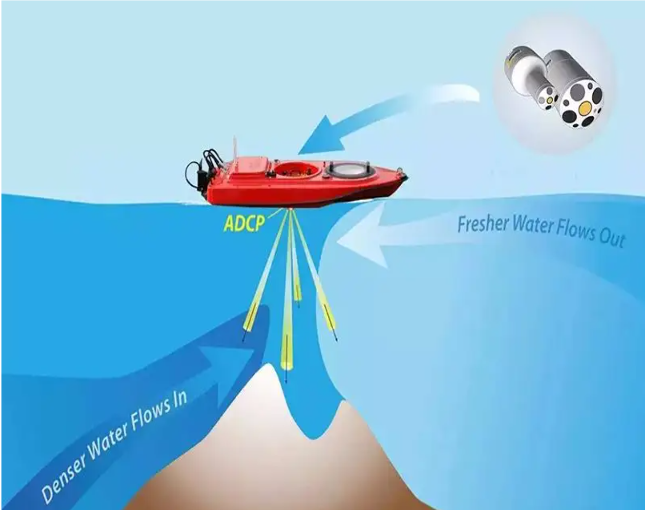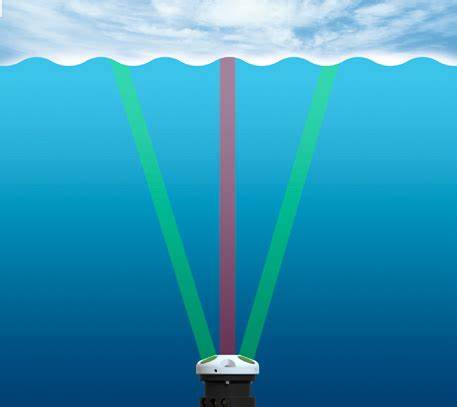ADCP
An acoustic Doppler current profiler (ADCP), is a device that uses sound waves to measure the speed and direction of currents throughout the water column. Understanding how water in the ocean moves provides important information about biological, chemical, and physical properties of the ocean.
How Does It Works
The ADCP uses the Doppler effect by transmitting “pings” of sound using a sequence of consistent rapid pulses that ricochet off particles suspended in moving water and reflect back to the instrument. Particles moving toward the instrument return waves with a higher frequency (or pitch), while particles moving away produce a lower-frequency return. Since the particles move at the same speed as the water that carries them, the difference in frequency between the sound waves the profiler sends out and the sound waves it receives can be used to calculate how fast the particle and the water around it are moving. The system tracks when each of the pings is returned; as pings that travel further (lower) will return later, this translates to current data across a variety of depths.
ADCPs use a series of acoustic transducers that emit and receive pings from different directions. The instrument can be mounted directly on a stationary object like a mooring buoy or even directly on the seafloor. They can also be mounted to a moving vehicle, such as ships or unmanned underwater and surface vehicles. On large research vessels, the ADCP is permanently mounted on the bottom of the ship’s outer hull.
As with other types of sonars, ADCPs are available in different frequencies. Higher frequencies, for example 300 kiloHertz (kHz), are useful in providing high-resolution data near the surface to a depth range of around 70 meters (230 feet). Lower frequency ADCPs, such as 38 kHz, will provide lower-resolution data to a depth range of up to 1,300 meters (4,265 feet), depending on surrounding noise levels in the ocean.
Why Is It Important?
Measuring currents is a fundamental practice of physical oceanographers. By determining how ocean water moves, scientists can determine how organisms, nutrients, and other biological and chemical constituents are transported throughout the ocean. Because of its high resolution and ability to gather data deep within the ocean interior, the ADCP is an efficient tool for sampling a large section of the ocean in a limited amount of time.
Heat transport in the ocean is a critical component of the global heat budget and thus plays an important role in Earth’s global climate. Nutrient transport is important for biological studies such as biomass concentrations, and sediment transport is important for geological studies such as river and beach changes over time. ADCPs can only measure temperature at the transducer (so at the transducer face, on the ship’s hull), but when used in conjunction with other measurements, the combination of temperature and currents is a powerful tool for study.

